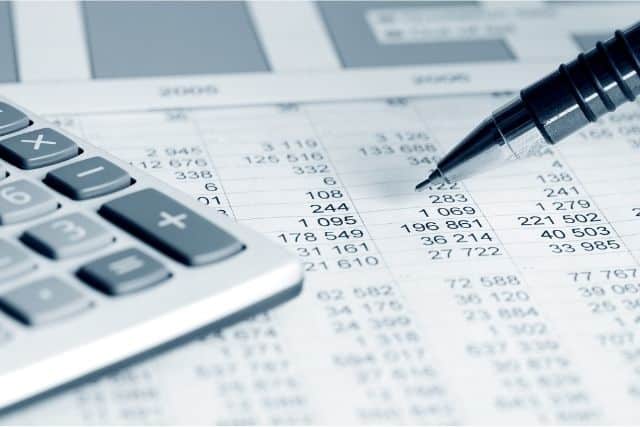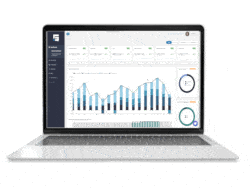A chart of accounts (COA) is a vital tool for accurately tracking and sharing financial data. Accountants and property managers rely on well-designed documents to ensure transparency, support budgeting and forecasting, and comply with industry standards. In this article, we’ll explore how to structure a chart of accounts for commercial property management, including its key components and best practices for setup and maintenance.
What Is a Property Management Chart of Accounts?
Essentially, this is an organized list of all financial data for a business. It’s a record that can show trends, predict performance for one or more properties, and enable you to share important details for banking and accounting purposes. In commercial property management, the chart reflects the unique expenses necessary for leasing space and maintaining common areas. Overall, the chart of accounts helps explain and share information about a business’s financial health. It is an essential tool for budgeting, efficient and cost-effective tax preparation, and performance analysis across multiple properties or portfolios.
How Does a Chart of Accounts Work?
A chart of accounts provides a framework for tracking income (such as rent and common area maintenance, or CAM, fees), expenses (including repairs, utilities, and property taxes), assets, and liabilities. Every account receives a unique identifier and occupies a specific position in the chart, which simplifies the process of locating and accurately reporting specific data. A well-designed chart enables owners, accountants, and lenders to compare properties, simplifies budgeting and auditing, and supports straightforward tax processes. In commercial property management, it also makes it easy to see which expenses are reimbursable, helping with CAM reconciliation at the end of each year.
Setting Up a Property Management Chart of Accounts
While creating a chart of accounts may seem complex, ensuring that it is well organized from the start can help you and others you work with access, understand, and share critical financial information easily. Let’s explore a few of the most important elements in building a strong chart.
Key Components
Generally, a chart of accounts for commercial property management will include five main categories:
- Assets: including properties, bank accounts, etc.
- Liabilities: including mortgages, loans, accounts payable, etc.
- Equity: owner contributions, distributions, etc.
- Revenue: income from rent, CAM, fees, etc.
- Expenses: costs including utilities, maintenance, property taxes, etc.
How to Structure a Chart of Accounts
There is no single standard structure you must use, and slightly different setups may work better depending on the specifics of the properties you work with. In QuickBooks, it is possible to start with a basic form, though modifying this to suit your needs may take more time and effort than it is worth. Instead, consider importing a free template like STRATAFOLIO’s sample chart of accounts file. Find more details on setting up your personalized chart of accounts here.
Most often, however, a chart of accounts is structured using a clear numbering system: each of the five main components above receives a ten thousand (so assets = 10,000s, liabilities = 20,000s, and so on). Within each ten thousand, more specific accounts are numbered in the thousands.
For example, bank accounts might be 12,000s, since they fall under the umbrella of assets. If a business had two bank accounts, it could number them 12,001 and 12,002. Using this type of numbering system gives each item a specific, easy-to-find location within the chart of accounts, while allowing room for growth as more accounts are added.
Why Does a Well-Structured Chart of Accounts Matter?
A well-structured chart lays the foundation for accurate financial tracking and informed decision-making. In a commercial property setting, income and expenses can span a wide range. From tenant rent and CAM recoveries to maintenance, utilities, and capital improvements, a properly-organized chart of accounts categorizes each of these financial activities. Neat categories make it easier to generate clear and useful statements, analyze property performance, and identify cost-saving opportunities.
It also supports compliance with industry standards while simplifying audits, tax reporting, and budgeting. When overseeing multiple properties, using one standardized chart of accounts keeps reporting consistent across the portfolio, improving transparency and efficiency. Accountants benefit from reduced errors and time spent reconciling accounts, while property managers gain better insight into each asset’s financial health. At tax time, this streamlined process means that property managers will save time and money on accounting services. It is a powerful tool for driving profitability and accountability in commercial real estate management.
Finally, a clear chart of accounts will make the process of reconciling common area maintenance much easier. Fewer, better-defined accounts leave less room for misclassified expenses. There will be a clear divide between what is reimbursable for expenses and what is not.
Tracking Multiple Properties Using Classes
Classes are another way to track multiple properties at once in a chart of accounts. Instead of creating a separate set of accounts or subaccounts for each property, you can assign a class to each property within your accounting software. This allows you to use a single shared chart of accounts while keeping income, expenses, and profitability distinct for each location. By running class-based reports, you gain detailed insights into the performance of individual properties. You can also compare them side by side, making it easier to manage portfolios, track trends, and make data-driven decisions. To learn more about using classes in QuickBooks, check out this guide.
Get Started Building Your Own Chart of Accounts
Schedule a demo with STRATAFOLIO to see how you can implement this chart of accounts for yourself and your clients.






